Labor Productivity is still squeezing the middle class to death. Labor Productivity rose 3.6% in Q1 2010 after an astonishing 6.2% jump in Q4 2009. Output increased 4.4% and hours worked increased another pathetic 0.8%, annual rate. Hourly compensation increased 2.3%.
For the year labor productivity increased 6.1% and hours worked fell 3.0%.
This gain in productivity from the same quarter a year ago was the largest since output per hour increased 7.0 percent over the four-quarter period ending in the first quarter of 1962.
Think about bad trade deals, offshore outsourcing, insourcing (or bringing in cheap labor, undercutting U.S. workers wages and jobs). There is no way this is due to your iPhone or advances in technology, which is the common blow off response from economists.
Below is productivity, compounded against last quarter percent change:
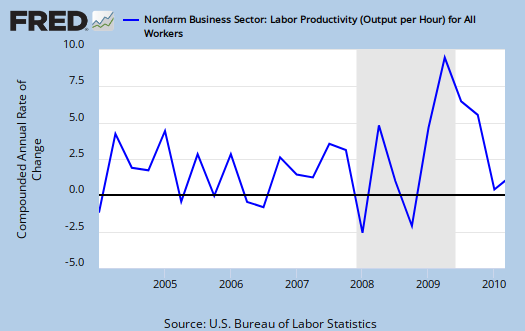
Productivity early change:
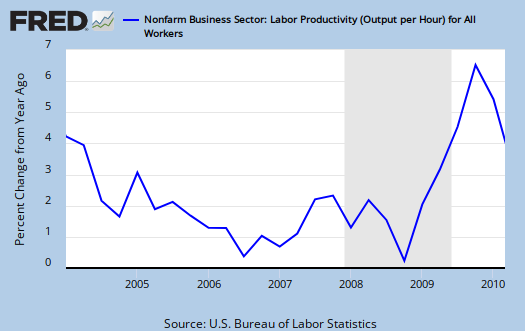
Below is a output per hours worked graph from 1990 until Q1 2010. Notice the huge spike in 2002, the same year corporations insisted on offshore outsourcing everything that wasn't nailed down, using the recession as cover.
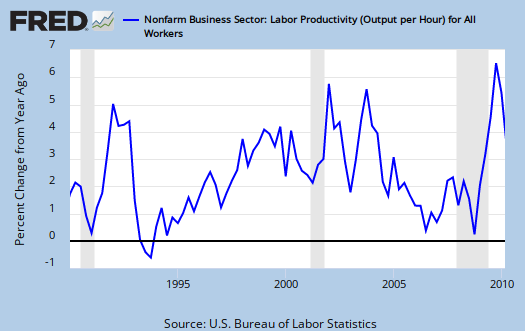
Below is the unit labor costs, compounded annual rate, percent change. Unit labor costs declined 1.6% for Q1 2010, 3.7% for the year. Still squeezing workers to death, although not quite as bad as last quarter. Below is the graph of percent change in comparison to 1 year ago in unit labor costs. A reminder:
BLS defines unit labor costs as the ratio of hourly compensation to labor productivity.
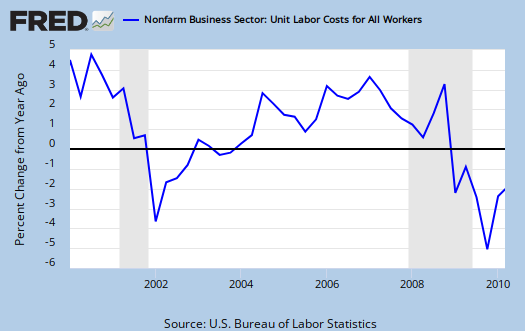
Unit Labor Costs, from the previous quarter, annual change rate:
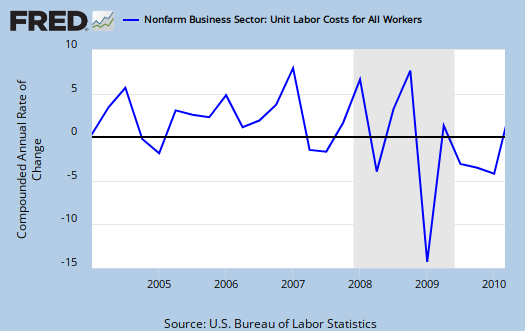
Below is the actual output graph. Raw output itself looks good, the levels back to pre-recession quantities.
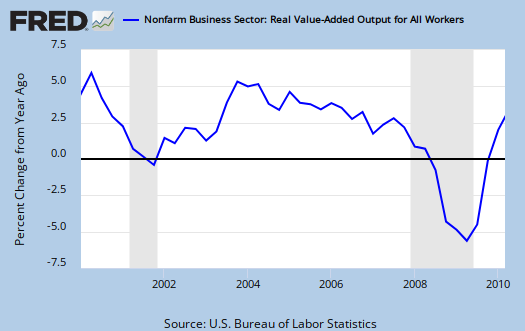
How does the DOL calculate labor productivity?
Labor productivity is calculated by dividing an index of real output by an index of the combined hours worked of all persons, including employees, proprietors, and unpaid family workers.
This is all calculated from BSL CES and Current Population survey data and is in part, estimated.
The great manufacturing worker squeeze is still on. Productivity increased 2.5% in Q1 2010, yet unit labor costs dropped 7.4%. Output for manufacturing increased 7.5% and hours worked increased 4.9% which is a first since 2007. Yet, unit labor costs declined 3.7%.
Unit labor costs in manufacturing declined 3.7 percent in the first quarter of 2010 and fell 6.1 percent over the last four quarters. The four-quarter decline was the largest in the series, which begins in the first quarter of 1988.
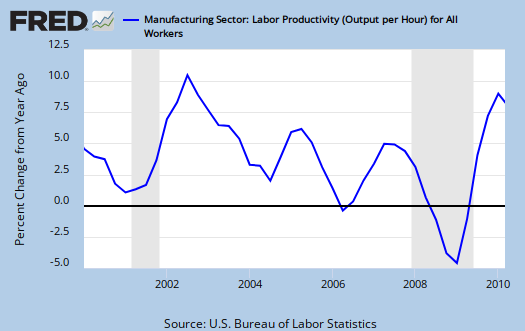
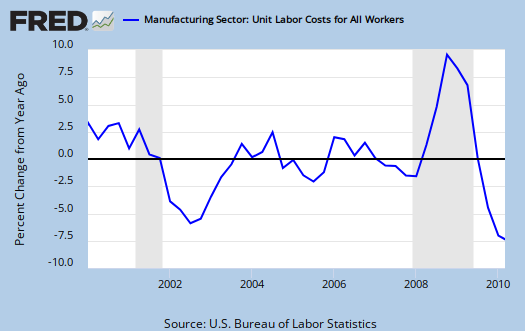
Manufacturing is the sector where goods produced offshore, but erroneously counted as domestic output are most suspect. Global sourcing and supply chains are muddle the waters on what exactly is made in the U.S.A.

Comments
worked to death and underpaid
as usual the middle class gets squeezed.
Slavery is a Big Part of Productivity
DOL Calculates productivity based on
a denominator of all labor inputs, paid
or unpaid.
"
Labor productivity is calculated by dividing an index of real output by an index of the combined hours worked of all persons, including employees, proprietors, and unpaid family workers.
"
So when IT outfits in the US use prison laborers making $10 per month in India, it is very good for productivity. Total labor inputs are counted. Unpaid family members get counted and so would commission sales people who make little or nothing.
This economy is making sure to validate the harshest criticism its enemies have leveled at it.
Burton Leed
productivity is domestic
That's domestic output, officially. So, officially things made by workers in India, even if employed by a U.S. corporation, do not count in the U.S. productivity figures.
That said, with global supply chains and a lot of intermediate work being offshore outsourced, it is showing up in productivity anyway. GDP too.
Prison labor is used in the U.S. They privatized prisons and I believe even use them for call centers.
I wrote up this post on some of the skew and should probably revisit this topic, this time with the mathematics and more details.